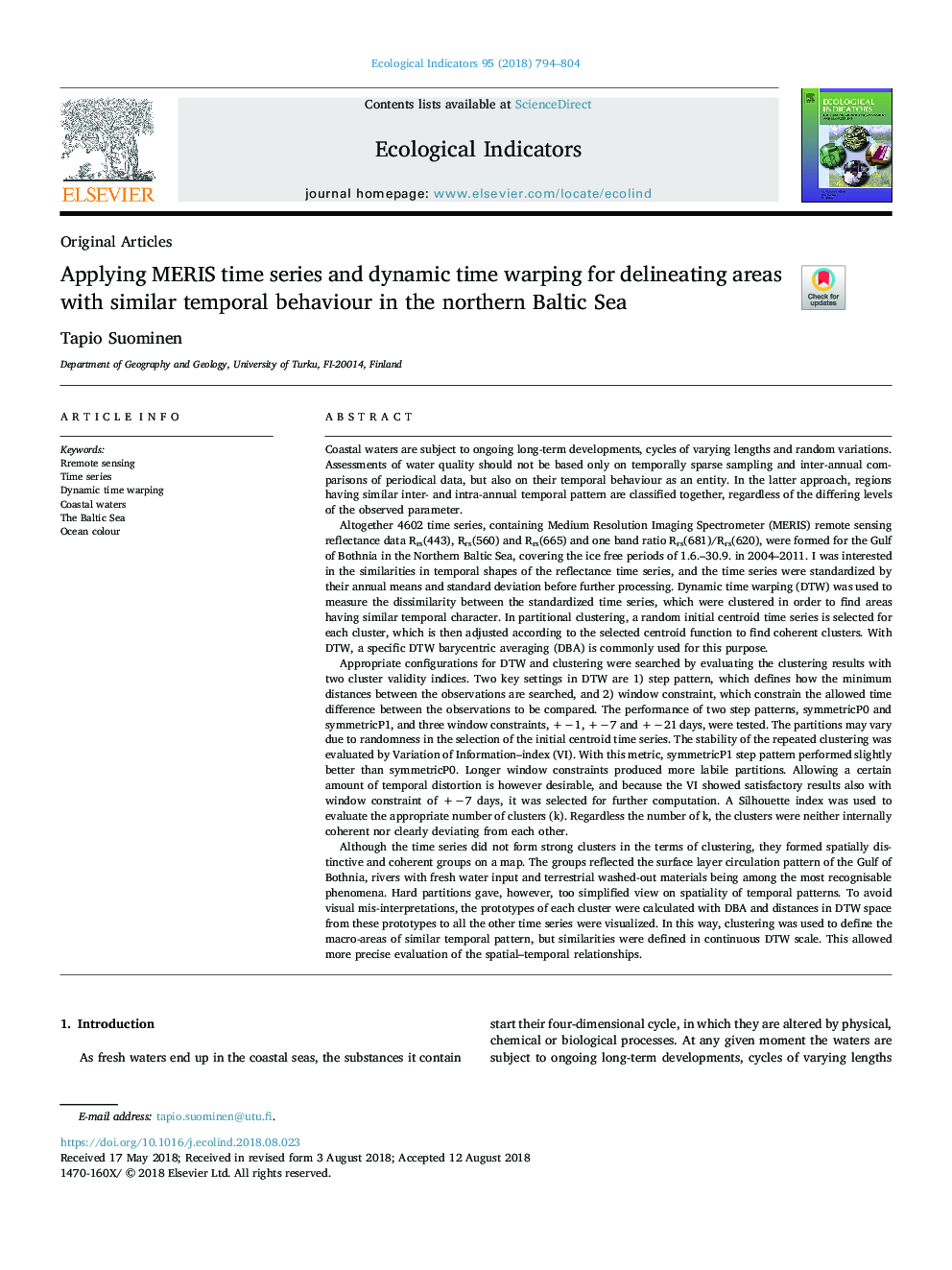| Article ID | Journal | Published Year | Pages | File Type |
|---|---|---|---|---|
| 8845047 | Ecological Indicators | 2018 | 11 Pages |
Abstract
Although the time series did not form strong clusters in the terms of clustering, they formed spatially distinctive and coherent groups on a map. The groups reflected the surface layer circulation pattern of the Gulf of Bothnia, rivers with fresh water input and terrestrial washed-out materials being among the most recognisable phenomena. Hard partitions gave, however, too simplified view on spatiality of temporal patterns. To avoid visual mis-interpretations, the prototypes of each cluster were calculated with DBA and distances in DTW space from these prototypes to all the other time series were visualized. In this way, clustering was used to define the macro-areas of similar temporal pattern, but similarities were defined in continuous DTW scale. This allowed more precise evaluation of the spatial-temporal relationships.
Related Topics
Life Sciences
Agricultural and Biological Sciences
Ecology, Evolution, Behavior and Systematics
Authors
Tapio Suominen,
